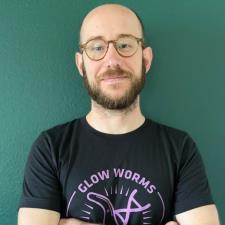Naina B. answered • 11/04/16
Tutor
4.8
(155)
Naina, a versatile tutor
Hi Khloe,
An electron transport chain is comprised of biological molecules, mostly proteins, built into mitochondrial inner membrane of eukaryotic cells and the plasma membrane of aerobically respiring prokaryotes. Electrons removed from glucose are transported by NADH to the top, higher-energy end of the chain. At the bottom, lower-energy end, O2 captures these electrons along with hydrogen molecules (H) to form water.
A photon of light strikes a pigment molecule, chlorophyll in a light harvesting complex of photosystem II (PS II) boosting one of its electrons to higher energy level. As this electron falls back to its ground state, an electron in a nearby pigment molecule is simultaneously excited. The process continues and energy is relayed to other pigment molecules. Each photo excited electron passes from the primary electron acceptor of PS II to PS I via an electron transport chain that has similar components as those of the electron transport chain active in cellular respiration. The process builds potential energy utilizing atmospheric CO2 and solar/light energy.
During aerobic respiration, glucose is oxidized to CO2, and O2 is reduced to H2O. Electrons lose potential energy during their transfer from glucose. Electrons are usually passed first to NAD, reducing it to NADH, and then from NADH to an electron transport chain that transports them to O2. The process spends the energy that needs to be replenished with formation of ATP molecule.
A photon of light strikes a pigment molecule, chlorophyll in a light harvesting complex of photosystem II (PS II) boosting one of its electrons to higher energy level. As this electron falls back to its ground state, an electron in a nearby pigment molecule is simultaneously excited. The process continues and energy is relayed to other pigment molecules. Each photo excited electron passes from the primary electron acceptor of PS II to PS I via an electron transport chain that has similar components as those of the electron transport chain active in cellular respiration. The process builds potential energy utilizing atmospheric CO2 and solar/light energy.
During aerobic respiration, glucose is oxidized to CO2, and O2 is reduced to H2O. Electrons lose potential energy during their transfer from glucose. Electrons are usually passed first to NAD, reducing it to NADH, and then from NADH to an electron transport chain that transports them to O2. The process spends the energy that needs to be replenished with formation of ATP molecule.
Hope this is helpful.




